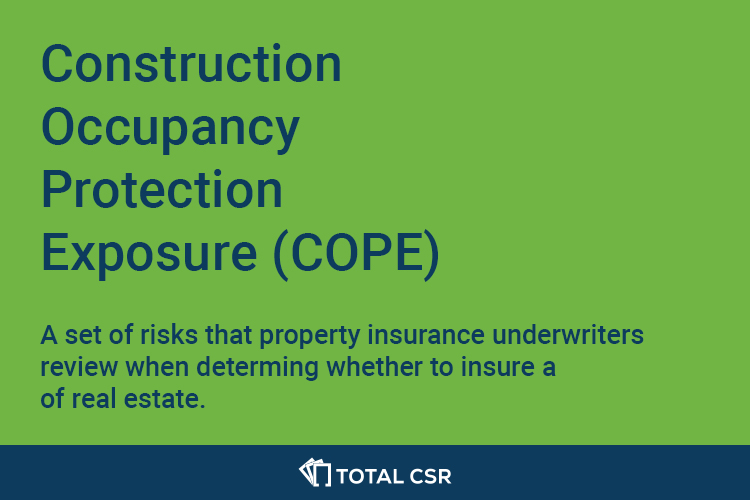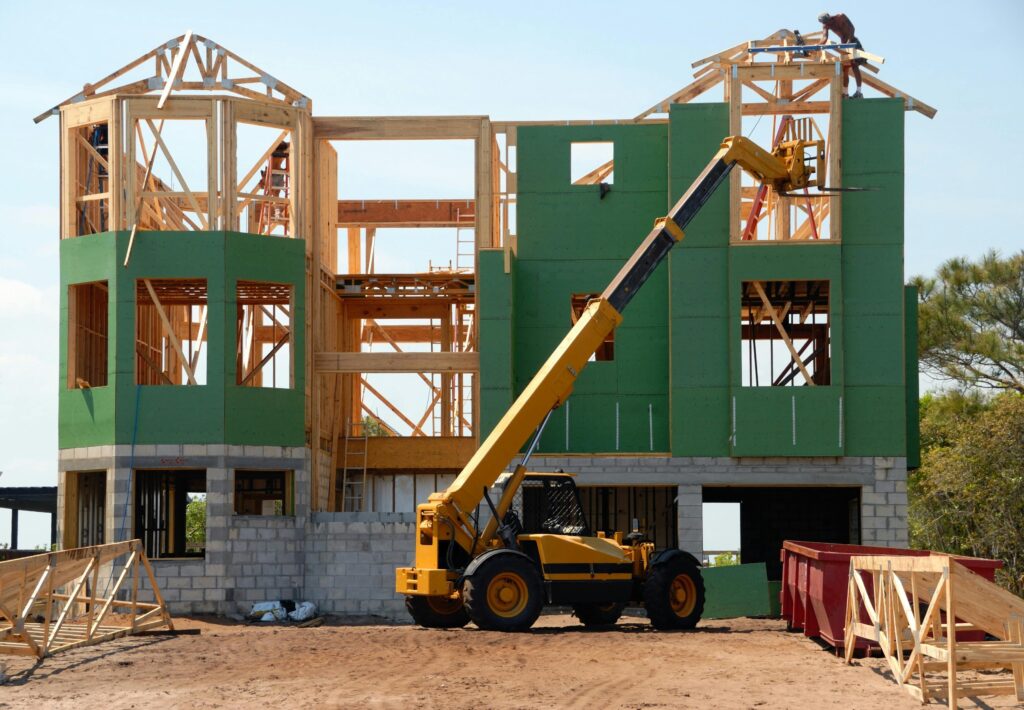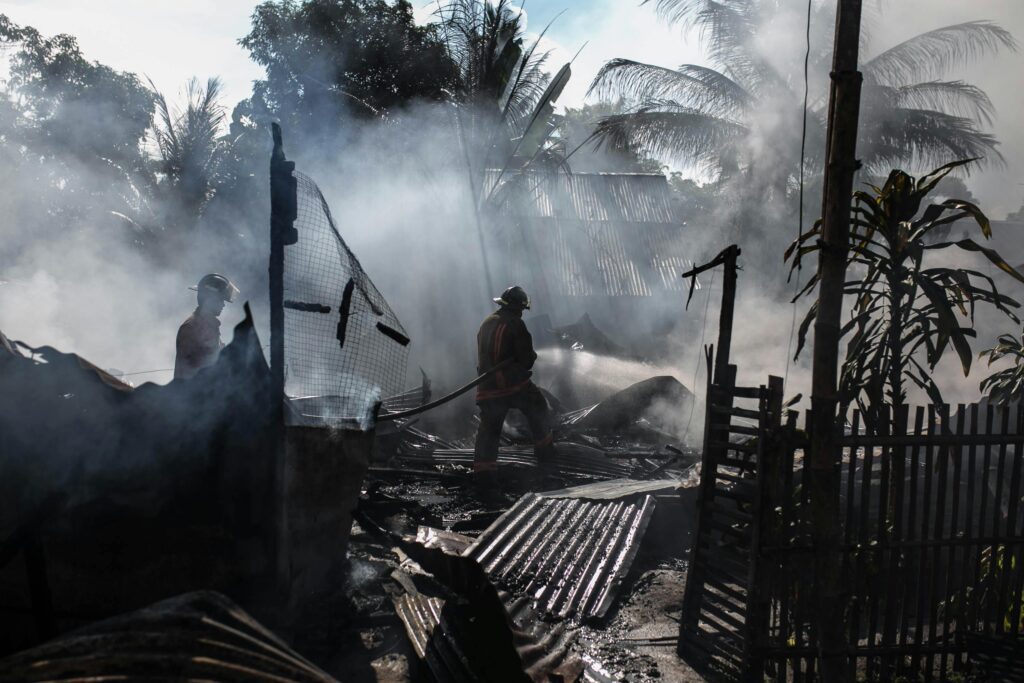Get Started
Follow these simple steps to get started.
- 1
- 2
- 3
Create Account: Step 1 of 3

COPE is a structured method in property insurance that evaluates risk through four factors: Construction, Occupancy, Protection, and Exposure. COPE is an acronym that helps insurers understand how a building is built, how it’s used, which protective measures are in place, and which external hazards exist. This COPE insurance term supports more informed decisions on coverage limits, deductibles, and pricing for property insurance.
Insurance professionals use the COPE approach to classify properties accurately. By applying COPE insurance principles, they can conduct more precise risk assessments and create insurance solutions tailored to each structure. Every element—Construction, Occupancy, Protection, and Exposure—plays a role in minimizing underinsurance and coverage gaps. COPE info is a key resource for underwriters when they evaluate property characteristics and decide on the right insurance coverage.

Construction looks at the materials, design, and structural framework of a building. COPE building information tied to construction is central to the overall COPE info that helps insurers make evaluations.
Frame: Commonly uses wood and other combustible components, raising the risk of fire and collapse.
Joisted Masonry: Combines wood joists with masonry or other fire-resistive materials for moderate fire resistance at a reasonable cost.
Non-Combustible: Employs metal or gypsum, reducing the spread of fire and limiting insurance claims.
Masonry Non-Combustible: Exterior masonry with non-combustible interiors—a favorable feature in COPE property insurance assessments.
Fire-Resistive: Typically includes reinforced concrete or steel, offering higher resistance to fire and physical damage, and often better premiums.
Buildings with stronger fire safety features tend to receive lower premiums, while wood-based buildings usually pay more. Reinforced concrete or steel often leads to improved insurance terms. Building age and square footage also influence COPE construction ratings.
Occupancy focuses on a property’s purpose and how it’s used. Knowing the occupancy type is essential when gathering accurate COPE data.
Residential: Single-family homes, condos, and apartments. Hazards often include kitchen fires and slip-and-fall incidents.
Commercial: Offices, retail stores, and other businesses, where data security, equipment upkeep, and customer traffic introduce unique risk factors for commercial property insurance.
Industrial: Warehouses, factories, and manufacturing sites. Flammable materials, industrial equipment, and large inventories raise the chance of significant losses.
Mixed-Use: Buildings combining multiple functions, such as residential above retail. Multiple occupant types can complicate risk assessments.
Residential: Aging systems can lead to water damage or mold.
Commercial: Handling sensitive data and electronic systems can spark liability or cyber-related claims.
Industrial: Storing chemicals or operating heavy machinery escalates fire and contamination risks.
Mixed-Use: Overlapping safety practices among different occupants can boost accident potential.
Protection involves the safety measures used to shield a building from loss, which helps reduce both the frequency and severity of claims. These elements are a major part of COPE insurance information.
Sprinkler Systems: Automated systems that significantly limit fire damage.
Fire Alarms: Provide early warnings, allowing faster response times.
Fire Doors and Walls: Structural barriers that help contain fires.

Alarms: Alert property managers or law enforcement of unauthorized access.
CCTV and Access Control: Monitoring systems and restricted access points help deter theft and bolster theft prevention.
Security Personnel: On-site staff can respond to suspicious activities or emergencies, lowering overall risk.
The system quality of these protective measures is crucial in COPE evaluations and heavily influences insurance coverage and premiums.
Exposure looks at outside factors that may threaten a building, such as nearby hazards, natural disasters, and neighborhood conditions. Accounting for external hazards is vital in a thorough COPE property review.

Collecting COPE data for insurance using a standard checklist ensures consistency. Having complete COPE information promotes accurate risk evaluations and policy creation. Below is a quick reference for collecting COPE details:
| Factor | Key Points | Action Steps |
|---|---|---|
| Construction | Building materials, design, building codes | Record type, year built, code compliance |
| Occupancy | Purpose of operations | Identify new tenants or operational shifts |
| Protection | Fire systems, security, local services | Check inspection records and test logs regularly |
| Exposure | Nearby hazards, weather, neighborhood changes | Update data as conditions change |
This workflow establishes credibility with underwriters and simplifies commercial property insurance task. The cope insurance terms now plays a central role in underwriter evaluation to gauge property risks more accurately.
Following COPE principles can significantly improve how an insurance professional handles property coverage. By applying cope in insurance strategies and collecting thorough COPE data for insurance, agents can avoid surprises, lower losses, and promote peace of mind among clients. Careful documentation and ongoing communication help these principles succeed. A wealth of COPE information benefits insurance underwriting by offering more reliable valuation models and guiding underwriter evaluations. By fully grasping what is COPE in insurance and implementing it, professionals can offer better insurance coverage tailored to clients’ specific needs. Ultimately, this leads to more accurate policies and smoother insurance claims, creating a win-win for insurers and policyholders alike.
Follow these simple steps to get started.
Create Account: Step 1 of 3
Loading...